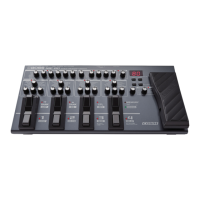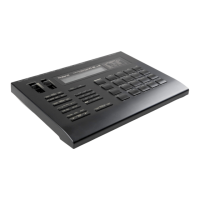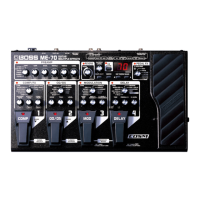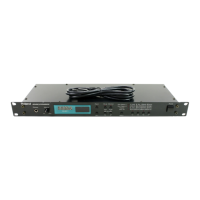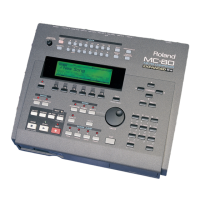2)
CONTROL OVER PARTS 1 TO
8
The Figure below shows musical data stored
in memory together
with
the
corresponding
timbre data. A group of such
data is called
a "patch".
A patch comes
in 128 variations
on the MT-32.
f
'
c
^
o
c
"
-\
KEY
SHIFT
FINE
TUNE
BENDER RANGE
ASSIGN MODE
REVERB
SWITCH
v
J
128 TIMBRES
128
PATCHES
(PRESET)
Unlike
the
"Timbre Setup" function
(see
page
18) that merely
switches between
different timbres,
an extefnally supplied Program
Change message causes the MT-32 to switch
to the new patch and
use
the settings stored
in
that specified patch memory.
FUNCTION
DESCRIPTION
ADJUSTABLE
RANGE
Sound group Selects the sound
group of
timbres.
A,
B,
!,orR
(1-30)
Sound
number
Selects the timbre
number.
1 to 64
Key shift Indicates the actual shift
relative
to
the
note data.
-24
to
+24
in
semitones
Fine
tune Allows fine tuning.
-50
to
50 cents
Bender range
Sets
the maximum effect of
the Bender.
0to24
Assign
mode (See below.) POLY
1,2, 3,
or 4
Reverb switch
Turns the reverb effect on
and off.
ON or OFF
System Exclusive messages allow
the user to
freely
edit the settings
in such patch memories.
OASSIGN MODE
The
assign
mode determines how the
MT-32
generates sounds in
response
to
the note-on
data it will
receive:
POLY1:
Polyphonic
mode, single assign,
priority given
to data
last
received.
POLY
2: Polyphonic mode, single assign,
priority
given
to
data
first received.
POLY
3: Polyphonic mode, multiple
assign, priority
given
to
data
last received.
POLY
4: Polyphonic
mode,
multiple
assign,
priority given
to
data first received.
23
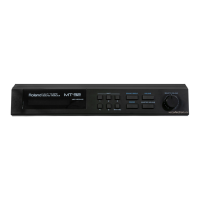
